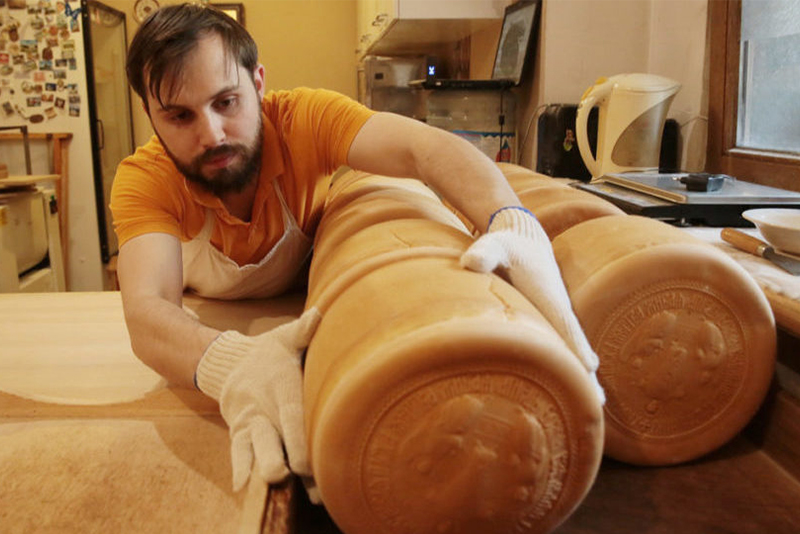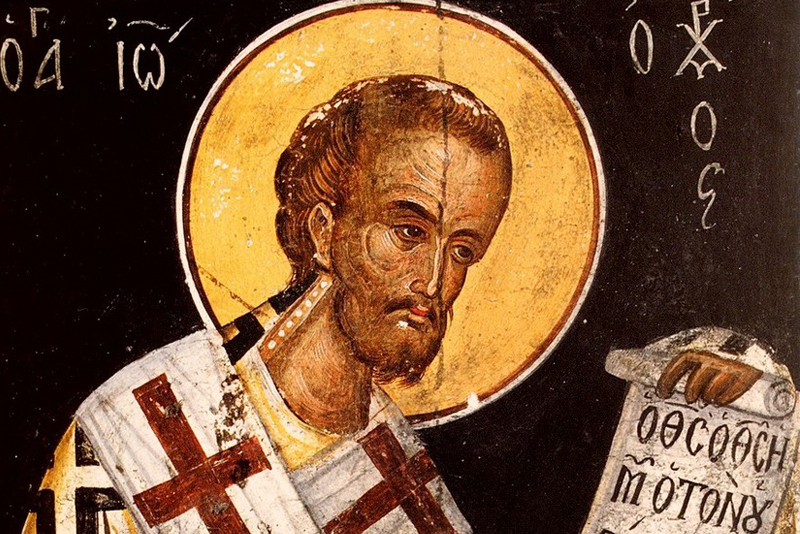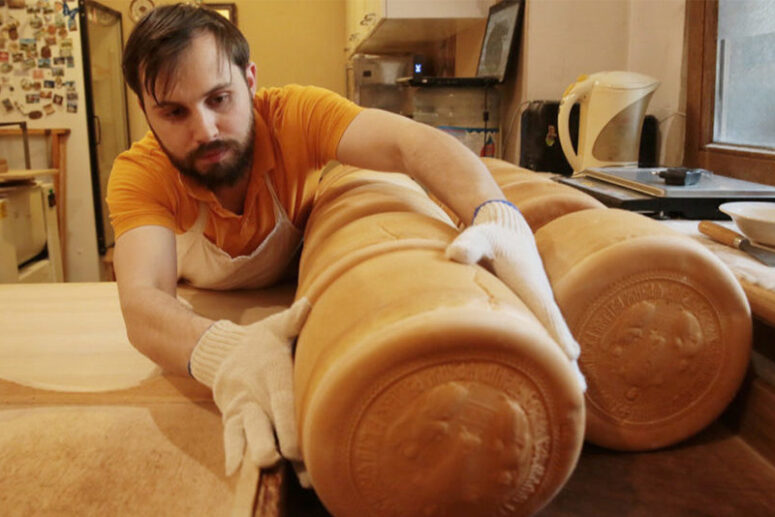
An illustrated explainer, with photos and videos
Throughout the Bright Week, visitors to Orthodox Churches will notice a large prosphroron placed on a table in front of the Holy Doors, the most prominent place in the church. The large prosphroron is called the Artos. Artos is the name for leavened bread with a depiction of the Cross or the Resurrection of Christ on it. Artos is a Greek word, translated literally as “leavened bread”.

The tradition of using the Artos in worship has existed since the age of the Apostles. When Jesus Christ ascended to Heaven on the fortieth day after His Death, His followers found consolation in their memories of their Teacher, His words and His actions. As they gathered for common prayer, they remembered the Last Supper and received the body and blood of Jesus Christ. During the shared meal, His disciples traditionally reserved the most honourable seat at the table to their Teacher, who was invisibly present among them and placed the bread in front of it.
Following this Apostolic tradition, the first shepherds in the Church established the custom to place bread at Church on the feast day of Christ’s resurrection as a visible recognition of our Saviour Who suffered and died for us as the bread of life. The Orthodox monasteries have kept this tradition almost intact. Throughout the Bright Week, the Artos is placed in the commons or on a separate table. Today, Artos is still a symbol of the invisible presence of Christ in our lives.
Making the Artos

As a general rule, one begins to make the Artos around the start of the Great Lest. The number to be made is the most decisive consideration. In the parish churches, with only a small number is needed, the process can take a week or so, while in the larger monasteries, needing thousands of loaves, they might begin well before the Great Lent.

Although quite similar to the baking of Prosphrora, the baking of an Artos is much more time-consuming and labour-intensive. For example, an Artos must be kept in an oven for more than four hours. This does not include the mixing of the dough and the cooling.

The full production cycle might easily take almost twenty-four hours. The Artos is baked in aluminium cans oiled with wax. To assess the readiness of the Artos, one looks at its colour. The finished loaf is white with a slight tinge of yellow.
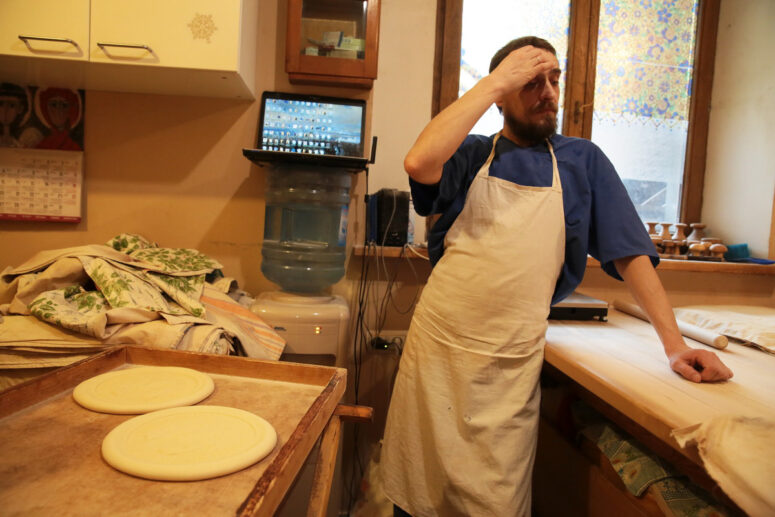


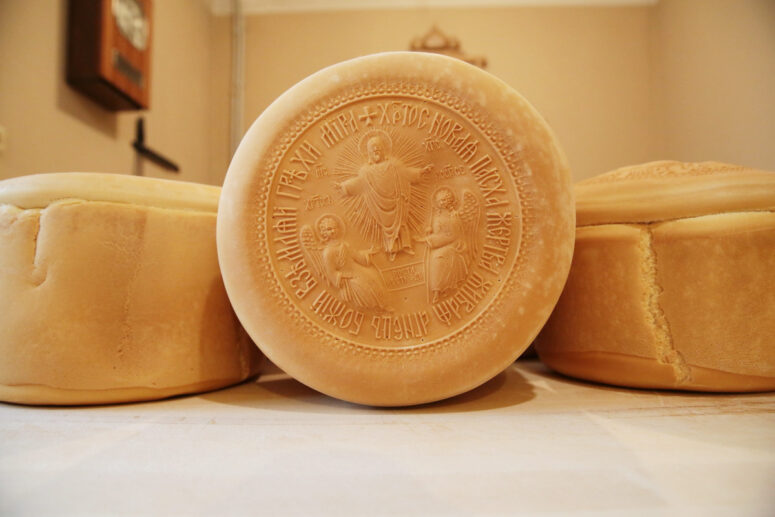
The finished loaves are stored in a designated place until Easter. The properly made Artos may be kept in storage for several months without losing any of its properties.
Finally, the Bright and Holy Pascha comes. After the Paschal Liturgy, the Artos is brought into the churched and placed before the Holy Gate. The rite of the consecration of the Artos is performed. The priest says the prayers and sprinkles the bread with holy water.
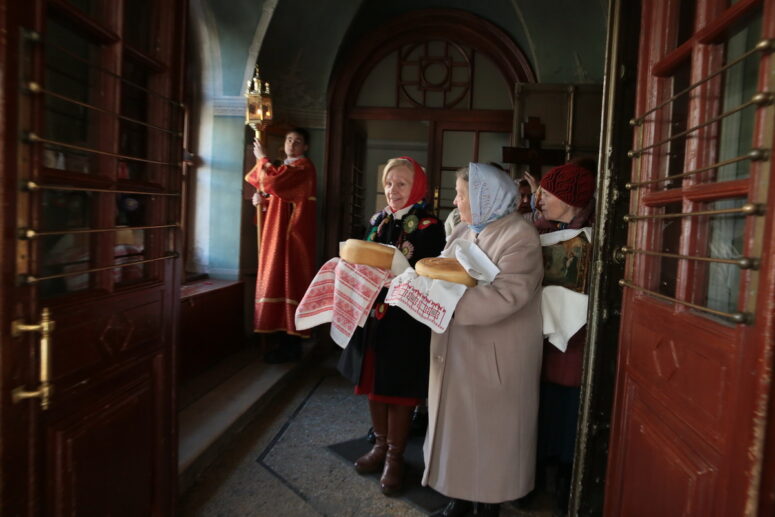
The sanctified Artos is placed on a table before the Royal Doors and displayed throughout the Bright Week. Every day after the liturgy, the Artos is carried in a solemn procession around the outside of the Church and then put back in its original place.
Distributing the Artos

On Bright Saturday, after the Divine Liturgy, the Artos is carried for the last time in a procession of the cross and is then broken and distributed among the congregation. The priest says a prayer over the Artos and breaks it into pieces.
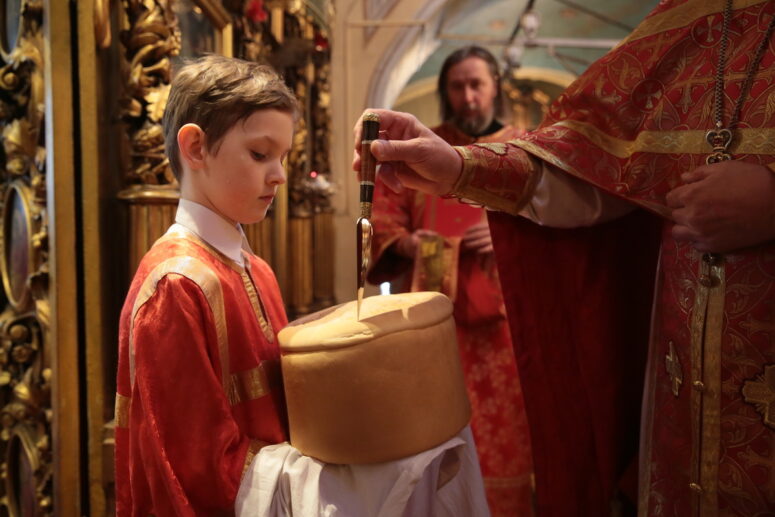
Surprisingly, in some of the larger parishes with great numbers of worshippers, the Artos is broken on the eve of the Saturday liturgy, so that there will be enough pieces for everyone.
With the blessing of the priest, the women volunteers do the job almost as a mystery while chanting prayers.
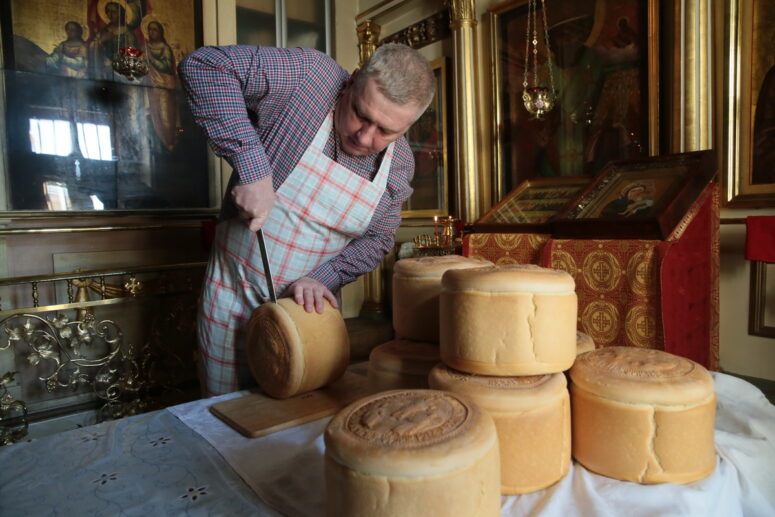
On a par with the holy water, Artos possesses mystical properties and is treated as a sacred object at the Orthodox Church. Eating Artos replenishes the physical and spiritual energies of the Orthodox faithful.

Like all other sacred objects, Artos should be treated with awe and piety lest it is infested with mould like ordinary bread. For long-term storage, Artos is cut into smaller pieces, dried and put in a glass container. Artos is to be eaten on an empty stomach, with holy water.
Respect the holiness of the Artos, and take care of yourselves.
Christ is risen!
Translated by The Catalogue of Good Deeds
Source: https://foma.ru/artos-pashalnyiy-hleb.html

